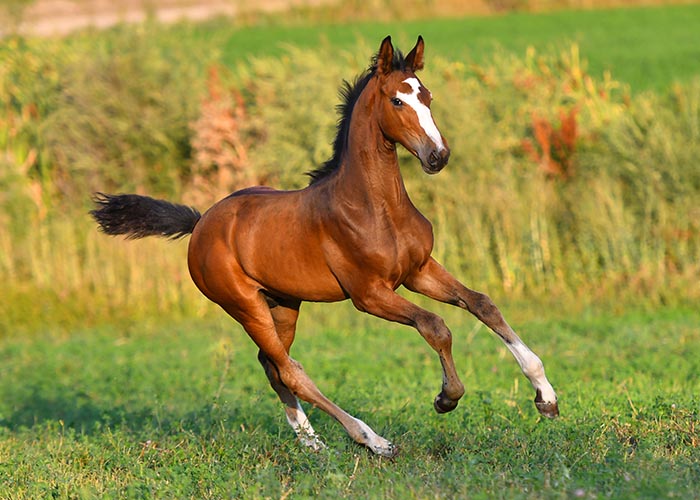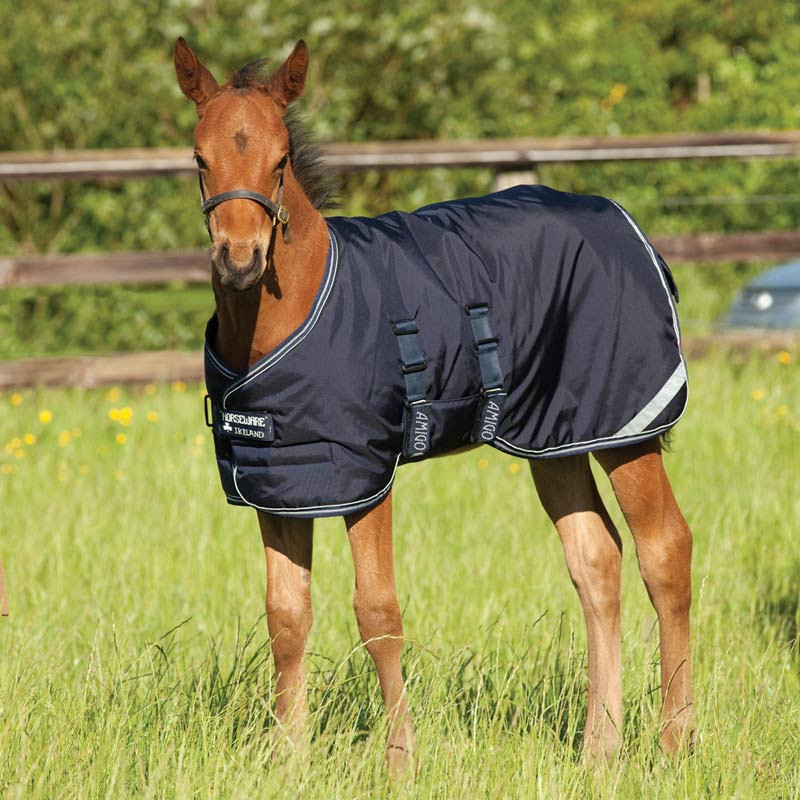
In the spring, the birds sing a bit louder, flowers start to poke their heads through the ground, and equestrians around the country welcome new foals into the world. Whether you are a first-time breeder or are a veteran breeder who breeds multiple mares, foaling season is such an exciting time of year. To prepare for a safe birth and a successful first month of your foal’s life, there are a number of essentials that you should have on hand. In this blog, we take a look at exactly what you need to have in your foaling kit as you patiently await your new equine bundle of joy.
Foaling Stall Preparation
A comfortable birthing area is essential for your mare as she prepares to give birth. Generally speaking, the stall should be at least 12’X18’, although many veterinarians and equine health professionals suggest a stall that is ideally 12’X24’ or 20’X20’. The large size is imperative so that your mare can walk around as needed to properly progress through labor, it also gives you more room to assist her if necessary and limits the chance of her accidentally stepping on the foal after the birth.
You will want to carefully observe the walls and floor, removing any errant staples or nails that may be poking through. While this is an important part of daily horsemanship, it is even more critical when you are expecting a foal. Then, thoroughly treat the area with a disinfectant, such as Oxine Sanitizer, to remove any biohazards from the stall.
In order to outfit the foaling stall, it will need to be heavily bedded. This will help to absorb the amniotic fluid as well as give the mare and foal a comfortable place to rest. Many breeders suggest a heavy layer of pine shavings (which are highly absorbent) with a thick layer of straw over it. The straw will prevent the shavings from sticking to the colt or filly and will not block the nasal passages as they take their first breaths.
For whatever reason, most mares foal at night, so adequate lighting is important. In fact, Benjamin Espy, DVM, DACT, reports in the AAEP article: Equine Reproduction From Conception to Birth, over 85% of foals are born at night. Make sure that your barn lights illuminate the entire stall. If not, consider purchasing a headlamp or powerful flashlight to keep outside the stall if needed.
Birthing Necessities
When building your foaling kit, it is important to plan for the worst and hope for the best. The most important item to have at your disposal is a way to contact your veterinarian in the event of an emergency. Many first-time breeders prefer to call the vet as soon as their mare begins to labor, while more veteran breeders feel confident assisting in the birthing process themselves. No matter what you prefer, it is important to discuss a plan with your vet and have access to your veterinarian’s emergency phone number.
Additionally, it is important to have a number of supplies on hand. You will want a thermometer to monitor the mare’s temperature and a stethoscope to survey her heart rate and respiration, as well as a notebook to keep track of these vital statistics and her behaviors. Some people prefer to use their cellphone for this task; if you are technologically acclimated this is a great idea, but we caution you to remember to bring your cellphone charger to the barn as well.
Once the labor progresses, you will most likely want to wrap your mare’s tail. Some breeders prefer a designated tail wrap, while others prefer cohesive bandages. In either case, the goal is to keep the tail hair organized, clean, and away from the birth canal.
You will also want to have several clean buckets close by. Fill one with warm soapy water so that you can wash your hands as needed (if soap and water are not available, hand sanitizer will do in a pinch). Another bucket can be used to hold the placenta so that your vet can evaluate it when they come by to perform the foal’s initiation evaluation.
As any experienced horseman or woman will tell you, you can never have too many clean towels when your mare is giving birth. Towels can be used to dry the foal, wash your hands, and clear the foal’s nasal passages.
Immediately after the foal is born, you will need to sterilize the umbilical cord stump, since this can be a site of early infection. Antibacterial solutions, like iodine or 2% chlorhexidine solution, are essential to properly cleanse this sensitive area.
In order for your foal to receive the valuable nutrients from the mare’s colostrum, it is recommended that they nurse within two hours. If, for whatever reason, your foal is unable to nurse within this time period, it is recommended that you supplement with a colostrum replacement product, such as Manna Pro Colostrum Supplement. These products provide your foal with vitamins, minerals, probiotics, and proteins they need to thrive.
It is recommended that you have the veterinarian out to evaluate your foal and ensure that they are healthy after a thorough physical exam. According to L.R.R. Costa, MV, MS, DACVIM, in the report Evaluation & Care of Newborn Foals, many equestrians subscribe to the 1-2-3 Rules of the Foaling. Generally speaking, the foal should stand within ONE hour, nurse within TWO hours, and pass their first feces (meconium) within THREE hours. It is important to monitor your foal for limb abnormalities as well as difficulties urinating or defecating before the vet arrives. These can signify larger problems that should be addressed immediately. Seemingly small issues, such as diarrhea, for example, can be fatal to foals.
Must Haves After The Foal is Born
After the birth, you will need a number of items to properly care for your foal. For many equestrians, the number one priority is having a properly sized foal halter. By beginning the halter training early, you can quickly help your foal to understand the concepts. We recommend also having a leather foal halter or a breakaway halter with the leather crown for turnout.
Depending on when your foal is due and the climate that you live in, a foal blanket may be a requirement. However, no matter where you live, it is strongly recommended that you have a petite blanket on hand. They will help to warm your foal if needed and can help protect your foal from inclement weather. If you have an early foal in a cold climate (such as a February foal in New England), you may want to consider a foal-sized turnout blanket, such as the Horseware Amigo Foal Turnout, which literally grows with your foal!

Horseware Amigo Foal Turnout Medium 200g
Suitable for foals from birth, the snug fit keeps your foal warm and dry.
While your foal will predominantly be relying upon its mother’s milk for nutrition, you may want to provide an electrolyte supplement and/or a vitamin supplement. These can be fortified with a grain, such as Purina Omolene 300, which is designed to be fed to foals and lactating mares. In order to prevent mom from munching on the foal’s rations, you can utilize a creep feeder or a foal feeder, which has tiny openings that are perfectly sized for a foal’s muzzle.
Welcoming a foal into the world is an exciting time, with so many hopes and dreams for the future, and it is essential to be prepared to set your youngster up for success in life. We encourage you to speak to your veterinarian if you have any questions regarding the birthing process, additionally, we have several books about foaling to help further your education, including the perennial favorite, The Foaling Primer: A Step-by-Step Guide to Raising a Healthy Foal.
At The Cheshire Horse, we carry everything that you need to support your mare through her pregnancy, assist her during the birthing process, and help her to raise a healthy foal. If you have any questions regarding the foaling supplies that we carry or would like assistance building your foaling kit, we invite you to reach out to a member of our experienced and highly trained sales staff.
